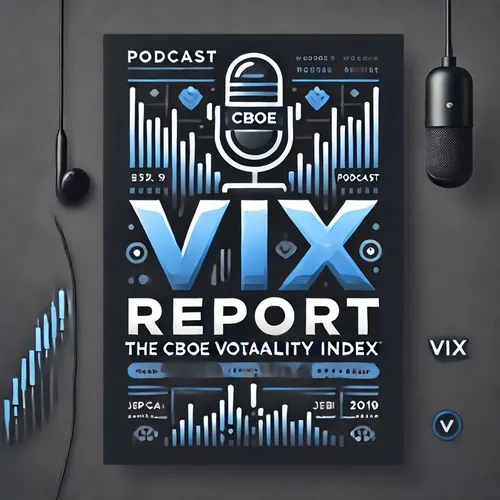Calm Markets Ahead: VIX Falls to 18.22, Signaling Reduced Volatility Expectations
- Author
- QP-1
- Published
- Thu 15 May 2025
- Episode Link
- https://www.spreaker.com/episode/calm-markets-ahead-vix-falls-to-18-22-signaling-reduced-volatility-expectations--66097458
As of May 14, 2025, the Cboe Volatility Index (VIX), widely known as the "fear index," stands at 18.22. This represents a slight decrease from the previous day's level of 18.39, marking a percent change of approximately -0.92%. The VIX is a critical measure of the stock market's expectation of volatility over the coming 30 days, derived from the price inputs of options on the S&P 500 Index (SPX).
The current decline in the VIX is indicative of a reduction in market uncertainty and suggests an improvement in investor sentiment. This easing of volatility expectations aligns with broader market trends, signaling greater investor confidence driven by several factors.
Firstly, positive market sentiment has played a pivotal role in the current VIX level. A decline in the index typically reflects a calmer market atmosphere, often buoyed by encouraging economic news or other developments that bolster investor confidence. When the market perceives stability, investors tend to exhibit less fear and become more willing to take on risk, leading to a lower VIX.
In addition to market sentiment, recent market behavior has also contributed to the VIX's downward trend. The index had recently reached higher levels, peaking at 23.55 on May 7, 2025. This peak was associated with heightened anxiety among investors due to various geopolitical and economic concerns. However, the subsequent decline to 18.22 indicates that these fears are gradually subsiding, suggesting a normalization of market conditions and a reduction in the expected near-term volatility.
Economic factors are another significant influence on the VIX. Positive economic data, such as robust employment figures or stronger-than-expected GDP growth, can lead to a reduction in perceived market risks. When economic indicators signal stability or growth, investors are generally more optimistic about the future, reducing demand for protective options, which in turn lowers the VIX.
Finally, the trading dynamics surrounding VIX derivatives also play a part in the index's fluctuations. The settlement processes of these financial instruments, including the Special Opening Quotation (SOQ) on expiration dates, can impact the VIX. Although these procedural factors might not directly reflect market sentiment, they still affect the index level on specific occasions.
In conclusion, the VIX index level of 18.22 as of May 14, 2025, suggests a more stable market environment following a period of elevated volatility. The decrease in expected market volatility is primarily due to improved investor
